Coming Back to the Stage After a Break can be Intense. This Guide Offers Steps to Navigate Confidently, from Reflecting on Your Break to Setting Goals and More. Read on.
This Post May Contain Affiliate Links
In compliance with the FTC guidelines, please assume that some of the links on these posts and sites are affiliate links (Amazon or others) from which I may earn a small compensation/commission from sales of certain items at no extra cost to you from qualifying purchases.
Anytime you see a link that looks like “astore.com, paid link, #ad, #CommissionsEarned or Amazon/Amazon.com/ca,”… it can be assumed that it is an affiliate link.
To learn more, follow the link below.
How To Get Back Onstage After A Long Break
Life is full of twists and turns; sometimes, our passions take a back seat.
Getting back on stage can feel daunting if you’re a guitarist who has taken a break from performing.
However, with the right approach and mindset, you can reignite your passion and reclaim your spot in the limelight.
Here are some helpful tips on how to get back onstage as a guitarist.
Reflect On Your Break

Taking a moment to reflect on your break can be incredibly valuable as you prepare to return to performing.
Start by considering the reasons behind your hiatus.
Was it due to burnout, personal reasons, lack of inspiration, or perhaps a combination of factors?
Understanding the root causes of your break can provide insight into areas of your life or career that may need attention or adjustment.
Next, think about what you learned during your time away from performing.
Did you discover new interests, develop new skills, or gain a fresh perspective on your craft?
Reflecting on these experiences can help you grow as an artist and identify areas of strength to leverage upon your return.
Finally, consider what you would like to see done differently as you resume performing.
Are there changes you want to make to your routine, approach, or mindset?
Use this opportunity to set intentions and establish goals for yourself moving forward.
By taking the time to reflect on your break, you can gain clarity, insight, and direction as you transition back into performing.
This self-awareness will help you navigate any challenges that may arise and enable you to approach your craft with renewed passion and purpose.
Reconnect With Your Instrument
Guitar Practice Routines

During your break, your guitar may have gathered some dust.
Before your comeback, take the time to reacquaint yourself with your instrument.
Spend time practicing scales, chords, techniques and assorted exercises to rebuild your muscle memory in your hands.
Set Realistic Goals
Know What You Sound Like Live
Regain Familiarity With Your Effects And Live Sound
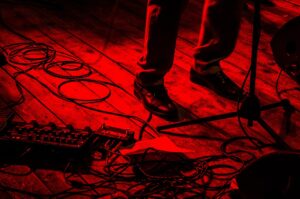
Understanding how your sound translates in a live setting allows you to make the necessary tweaks to ensure optimal sound quality with your effects/amp setups.
If you are familiar with how you sound with your Gear live, it allows for better communication during performances with your bandmates and ensures everyone is musically on the same page.
It also allows you to focus without being distracted and express yourself more freely, knowing that your sound is exactly how you want it.
Practicing using your effects and amp settings before returning onstage can help you not only reacquaint yourself with your sound but also experiment with different settings and effects, which can inspire new ideas and creativity along with building stage confidence. (More on this later)
Practice Playing Standing
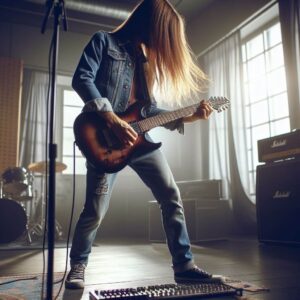
Practicing guitar is usually done sitting which is good for woodshedding, but playing live generally requires standing, and this changes everything about how you approach the instrument and how it gets played.
You will not play the same way standing as you do sitting, so it’s important to practice playing the guitar standing before you perform live.
Some Decisions That Need To Be Addressed
- How low or high do you want to hang the guitar?
- How does it change your right and left hand playing?
Physically Feels Different
Additionally, practicing standing up helps you prepare for the physical demands of performing live.
It allows you to get used to the weight and balance of your instrument, for it simply physically feels different.
Incorporating standing practice into your routine can help you feel more prepared and perform at your best when you finally step back onto the stage.
Video
Keep Updating Your Skills & Gear
Guitar Skill Upgrades
Preventative Maintenance
In addition to exploring new gear, it’s crucial to prioritize preventative maintenance to keep your existing equipment in top condition.
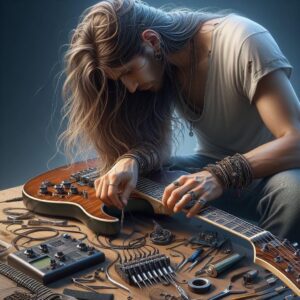
Regular inspection of guitars, amplifiers, pedals, and other gear accessories can help identify potential issues before they escalate into more significant problems.
Regularly changing strings, cleaning contacts, checking for wear or damage, loose connections or replacing cables/batteries can prolong the lifespan of your gear and ensure that all components are functioning properly.
By staying proactive with preventative maintenance, you can avoid unexpected breakdowns and unwanted stress while maintaining consistency in your sound quality.
Network And Collaborate
Networking is critical to getting back on stage. Attending open mic nights, jam sessions, and local music events not only helps connect with other musicians but can lead to potential gig opportunities.
Collaborating with other artists can reignite your passion for performing and inspire new musical ideas.
Also, it allows you to see what other guitarists are doing live; with their playing and Gear, setting a standard for you to expect as part of the live guitar community.
Stay Positive And Patient
Returning to the stage after a long break can be nerve-wracking, but it’s essential to stay positive and patient with yourself.
Remember, music is meant to be enjoyed, so don’t be too hard on yourself if things don’t go perfectly initially.
With time and practice, you’ll regain your confidence and stage presence.
Learn To Do A Pre-show Warmup
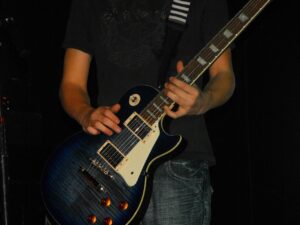
Learning to do a pre-show warmup is necessary for guitarists returning onstage after a long break and is a best practice taught to us by veteran players.
Playing guitar can be physically demanding, especially during a live performance where you might be playing for an extended period.
A proper warmup routine helps prepare your body and mind for the physical and mental demands of the stage.
It can improve your playing by increasing your flexibility, strength, and coordination, loosening up your muscles and joints, and reducing the risk of strains or other hand injuries, ensuring that you perform at your best.
Additionally, a pre-show warmup can help you mentally prepare by calming your nerves, increasing your focus and concentration, allowing you to connect with your instrument, and ensuring that you’re in the right mindset.
Learn To Train Your Mind To Relax

Training your mind to relax is crucial for guitarists preparing to return onstage.
The mental aspect of performance is often overlooked, but it plays a significant role in one’s ability to deliver a great performance.
By learning to relax your mind, you can reduce performance anxiety, improve focus, enhance your overall mental clarity onstage and play guitar with Relaxed control or no tension in your hands.
One key benefit of training your mind to relax is the ability to manage performance anxiety.
Many musicians experience nerves before going onstage, negatively impacting their performance.
Learning relaxation techniques such as deep breathing, visualization, or meditation can help calm your nerves, approach your performance confidently, and stay present and engaged in the music.
Stress and anxiety can take a toll on your mental health, and relaxation techniques can help your overall mental well-being and manage these issues more effectively.
By incorporating relaxation into your routine, you can improve your mental resilience and enjoy a more positive mindset onstage and off.
Musical Stage Confidence Building
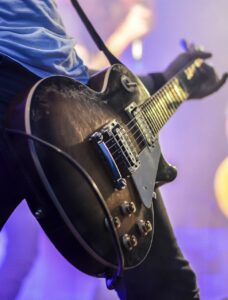
Regaining your confidence is critical to getting back onstage as a guitarist.
Musical Confidence is about how you appear to your audience and feel while performing.
When you regain it, you project a sense of assurance, allowing you to be more expressive and engaging onstage. This draws your audience into your performance and creates a memorable experience for everyone involved.
Taking Risks
Confidence allows you to take risks and explore new musical ideas without fear of failure; you can push yourself beyond your comfort zone and truly showcase your musical abilities, as you can deliver your best even under pressure.
Overall, having your stage confidence back is a game-changer for any guitarist.
It can take your onstage performance to the next level and truly shine as a musician.
The funny thing about confidence as a guitarist is that you have to DO it to get it.
Add Physical Fitness

Something that is not talked about enough is the importance of incorporating physical fitness into your routine.
It plays a crucial role in preparing for your return to the stage as a guitarist.
Guitar playing requires stamina, endurance, and dexterity, which can be enhanced through regular exercise.
Engaging in cardio, strength training, and flexibility exercises improves your overall physical health and strengthens the muscles and joints used in playing the guitar.
“When I joined David Lee Roth’s band I was introduced to high-intensity exercise and I love it”
Additionally, maintaining good posture and body alignment through exercises like Yoga or Pilates can prevent injuries and enhance your onstage presence.
By prioritizing physical fitness, you’ll feel more energized, strong, and conditioned to deliver stellar performances that captivate your audience no matter the duration of stage time.
Consult a professional trainer if you have specific requirements, as most veteran players do before embarking on tours.
Empower Playing With A Rocking Diet

Long gone are the days of drugs, drinking, and rock ‘n roll as a staple to greatness.
Along with physical fitness, the benefits of a proper diet can help provide…
- Sustained Energy: Complex carbs, lean proteins, and healthy fats like quinoa, chicken, and avocados provide lasting energy.
- Muscle Strength: Protein-rich foods like lean meats and beans aid muscle repair, while potassium from bananas and sweet potatoes prevents cramps.
- Mental Clarity: Omega-3 fatty acids from fish and nuts support brain health for focus during performances.
- Immune Support: Boost your immunity with vitamins C and D from citrus fruits and mushrooms, staying hydrated with plenty of water.
- Digestive Health: Fiber-rich foods like fruits and vegetables maintain gut health for optimal nutrient absorption.
- Hydration: Drink water consistently to avoid dehydration, especially on performance days.
Remember to listen to your body, experiment with foods, and consult a dietitian for personalized advice. With the right nutrition, you’ll rock the stage with confidence.
Final Thoughts
Live Music Comeback Strategies

Getting back on stage as a guitarist after a long break is a rewarding journey that requires dedication, passion, and perseverance.
But there are many uncertainties until you re-establish your guitar playing and sound.
I went from being completely comfortable onstage to being terrified before I returned, so I thought this would make a good post-topic.
My path back to the stage is still not as comfortable as I would like it to be, as the unknown of what to expect is overwhelming.
But by reflecting on the above topics, I believe that you will have covered all the bases from a helicopter altitude to ensure your successful comeback while reigniting your love for music.
If you have any more tips on this topic, please feel free to share them in the comments. In the meantime, tune up your guitar, hit the stage, and let your music shine again.
Did You Like This Article
Check out my post on 10 Veteran Concepts To Improve Guitar Playing
Also…
As always, stay the course and keep playing.
Feature Image Courtesy of Maciej Cieslak from Pixabay
Red Stage Image Courtesy of Alessandro Lannocca from Pixabay
Peddles Image courtesy by akd835 from Pixabay
Pre-stage warmup Image courtesy of Terry Straubel from Pixabay
Low-hanging guitar Image courtesy of Tom und Nicki Löschner from Pixabay
All AI-generated images courtesy of Co-pilot
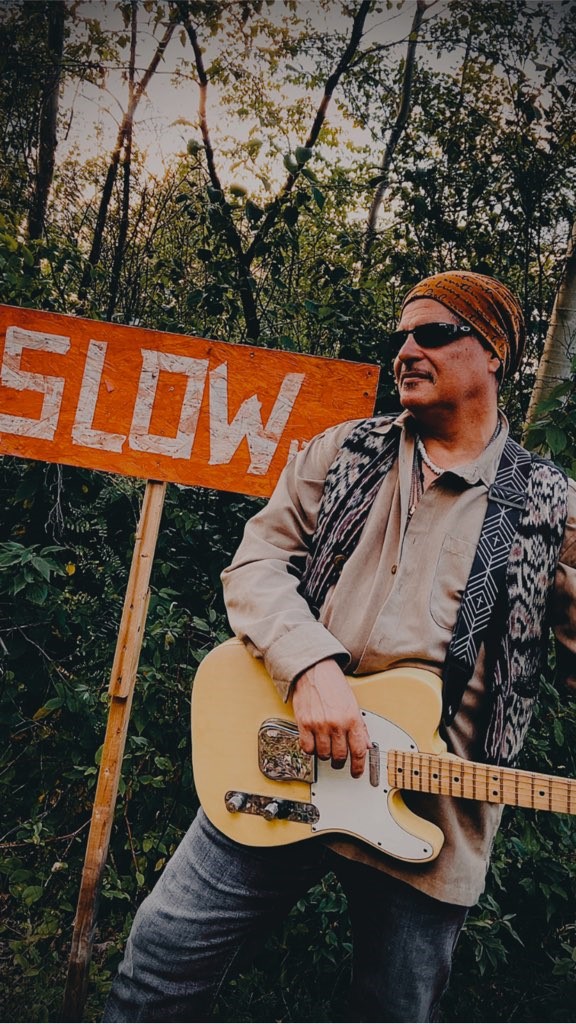
Starting A Journey At 7 Years Of Age, The Love For The Guitar Only Became Stronger Going Into My Teens. This Leading To An Exciting Time Of Teaching, Performing, And Recording. Join Me Now As We Can Bring The Love Of This Instrument To Other Musicians Globally.

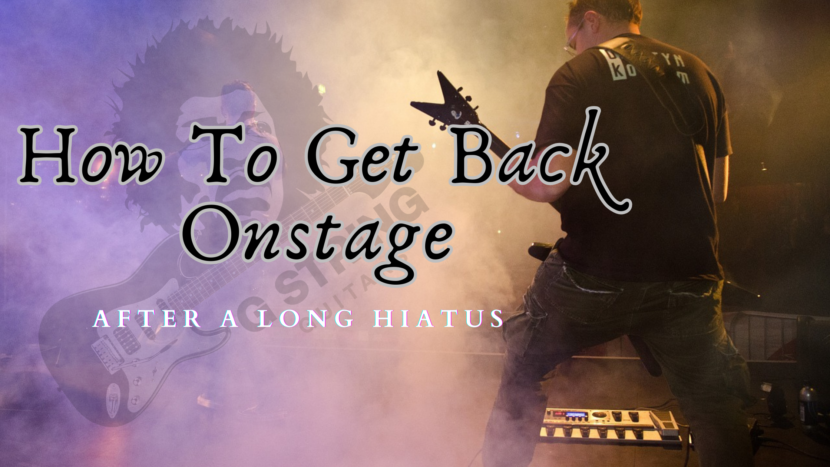
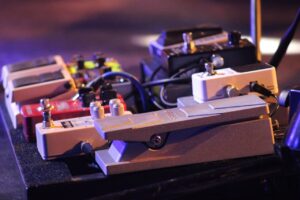 Tone Chaser
Tone Chaser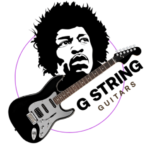
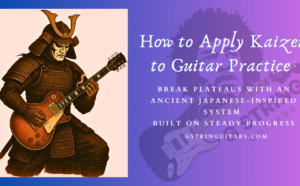



Hi there
Your article provides valuable insights on how musicians can overcome the challenges of returning to the stage after a prolonged hiatus. From addressing performance anxiety to rebuilding stamina, it offers practical tips to help artists navigate this transition smoothly.
However, I’m curious, what specific strategies have you found most effective in regaining your confidence and stage presence after a long break?
Hello Troy
Thank you for coming by the site and leaving your thoughts
To answer your question, the entire post was my overall thoughts on the situation, but the ones that really need to happen before you get back on stage after a period of time away are…
Getting your fingers back
Getting your sound locked in
Knowing your gear
Playing standing up and simply getting out there and DOING IT.
Again, thank you for your thoughts, and if you like this post, do not hesitate to read some of our other content and leave your thoughts like How To Prevent Hand Pain For Electric Guitarists
Kind Regards
Dino @Gstringuitars